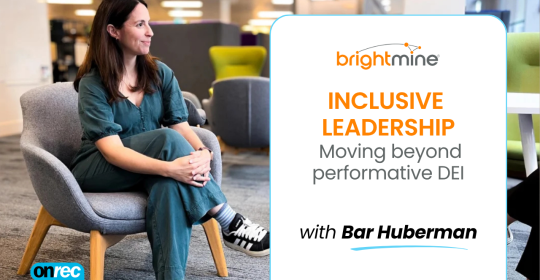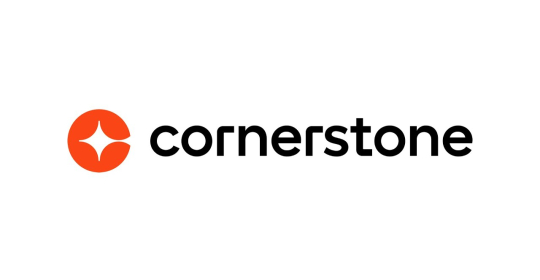Words are not the best way to illustrate this, but stick with me here. Imagine you're at a concert. The orchestra’s there. They look the part. With instruments raised, they’re ready to play. The composer drops the baton, and they begin. But something's not right. It sounds kind of off.
There's no harmony, no clear melody. The strings are playing in a different key to the brass section. Nobody's following the percussion’s rhythm. They're all skilled performers, but they're not working in unison.
It's pretty clear where this analogy is going. If your hiring process isn't in sync with your company's strategy and business objectives, just like the orchestra, you're out of tune. You’re discordant because you’re not aligned.
Misalignment is a common problem. Research from Harvard Business Review, for example, reveals it’s two to three times more prevalent than business leaders think. As the report outlines, this is hugely problematic since it leads to slower and lower-quality processes with widespread friction.
Business alignment in hiring is, however, becoming more and more of a priority. We’ve noticed the talent and business leaders we work with are talking about it more often. It’s also one of the central issues industry experts raised at our annual conference, Supernova 2024.
What does business alignment in hiring mean?
A poll taken at the Supernova conference this year revealed business alignment is the top priority for better hiring in 2025 for 62% of attendees. However, it also became clear that it means slightly different things to different people:
Getting leadership buy-in: Deirdre Clarke, Group Head of HR at Portwest, said that it’s critical to get support from the C-suite. As Deirdre explains, this isn’t always straightforward and can also mean guiding business leaders on the value of including hiring teams in planning and decision-making.
Supporting business outcomes: Getting leadership buy-in means speaking the language of leaders. As Shane Barnfield, Global Head of Talent Acquisition at Keywords Studios, explains, when Keywords Studios first started focusing on business alignment in hiring, it involved looking through the lens of adding value to the organisation and the different ways the TA function contributes to business outcomes.
Working toward common goals: Once leadership is bought in and aligned on hiring, you then need to ensure everyone in the organisation, across the spectrum, knows and accepts these shared goals, the strategies needed to achieve them, and how to overcome potential hurdles. TCS Insights’ co-founder Simon Townsend says reinforcing this is key, suggesting that as soon as you get sick of saying the message, your people are just starting to hear it.
Right people, right time, right roles: Ben Eubanks, Chief Research Officer at Lighthouse Research, explains the output of business alignment as hiring the right people at the right time for the right roles. As he notes, it sounds simplistic, but when it comes down to it, hiring is about fitting people into a business and, at the same time, finding opportunities for candidates that are right for them.
As our speakers and panellists consistently reinforced, business alignment in hiring is not a one-time task. It's an ongoing process that demands constant work from all those involved. It's about everyone being on the same page, pulling in the same direction, and pursuing the same objectives. Or, you know, performing like a finely-tuned orchestra.
David Burke nailed it when he said business alignment in hiring is when “Everyone understands that the customer is the business. Everyone respects everyone else's part in the process. It’s a true partnership where everyone coming to the table is appreciated by everyone else in terms of expertise and contribution to a quality process and a quality outcome.”
Misalignment red flags
We asked our keynote speakers and panellists what signs indicate that an organisation is failing to align its business with its hiring practices. Here’s their response:
- “Increased time-to-hire, retention rates, and attrition. Within TA teams, signs like repositioning or repurposing of roles or job specs. or processes mean it's time to take a step back and reassess.” David Burke, Senior Director, Global Talent Acquisition and Employer Brand, Workhuman.
- “Universal frustration.” Marilyn Pearson Hendricks, CEO, WorkTech Advisory.
- “Inconsistent candidate experiences and recommendations getting rejected.” Amandeep Shergill, Senior Director of Recruiting, Automattic.
- “Haphazard hiring processes where the CEO and executive leadership make decisions without consulting the people on the ground, the ones who do the work.” Finbarr O’Connell, Director, Talent Acquisition (EMEA), OpenText.
- “Time-to-hire isn’t a metric to live and die by, but it shows a trend that something is broken, and we need to start asking questions.” Shane Barnfield, Global Head of Talent Acquisition, Keywords Studios.
- “Butting heads between business leaders and the people actually doing the hiring activities.” Ben Eubanks, Chief Research Officer, Lighthouse Research & Advisory.
- “Companies that use talent acquisition as a tactical enterprise rather than a strategic partner.” Marcus Thorpe, Global Head of Talent Acquisition, Thoughtworks.
Actionable ways to better business alignment in hiring
There’s no silver bullet or one-size-fits-all simple solution to business alignment in hiring. What works for a small startup will be very different to what’s needed at a multinational enterprise. That said, understanding and proactively working to overcome common barriers to alignment, such as poor communication, fear of change, and siloed working, can help you navigate the process more effectively.
Secure a seat at the executive table: One central tenet of business alignment in hiring involves a strong relationship between talent acquisition and the executive. As Shane Barnfield explains, this is about finding out what’s important to the C-suite and then showing them how TA can and will contribute to these long-term objectives and goals.
Securing a seat at the executive table means literally being in the room or on the call when top-level meetings occur. It means providing executives with regular updates and having a flow of information so decision-making on both sides is fully informed.
Use data to inform decisions and support strategies: Of course, it’s difficult to challenge the status quo. In many organisations, there’s a fear of and resistance to upending existing strategies and workflows from the leadership team down to workers on the shop floor.
According to David Burke, you can often overcome pushback and get people to a place where they’re open to new ideas by presenting evidence and data-backed insights in a digestible and understandable way. Sharing market knowledge and industry intelligence demonstrates why you deserve a seat at the table and why your expert perspective should be considered.
Collaborate and define mutual objectives: Paul Daley, Managing Partner at Oconic, says poor hiring comes about when there’s a lack of clarity on the business plan, business strategy, the goals of the organisation, and, therefore, it’s unclear what the definition of good looks like. When there’s disagreement over the meaning of performance, you end up in a situation where you’re not hiring the right people in the right roles.
Finbarr O’Connell, Director of Talent Acquisition (EMEA) at OpenText told us that overcoming this relies on promoting and nurturing a company culture that prioritises cooperation and having complimentary measurable objective outcomes at all levels and functions. For Shane Barnfield, listening is essential. Listening to all sides and then bridging the gaps between stakeholder, organisational, and candidate needs.
Shift to a long-term mindset: TA can all too easily fall into the trap of focusing on short-term, immediate goals like filling a role by a set deadline or getting a certain number of candidates lined up for interview. But, if hiring outcomes are to improve, the reactive relationship between TA and businesses needs to change.
Amandeep Shergill, Senior Director of Recruiting at Automattic, says people need to shift their mindset from looking at what TA needs to do today to looking at what the business needs now, next and later. Finbarr O’Connell recommends one way is to think practically. This means consulting with the teams on the ground early in the process and coordinating hiring with their specific needs. “I got my team members to go and sit with an individual on the team they were recruiting for, and that was such an eye opener for the team because they actually sat there and looked at what the person was doing,” he told us.
Demonstrate business value: Marcus Thorpe, Global Head of Talent Acquisition at Thoughtworks, positions data as king. He advises that to get the job done correctly, data must be the starting point every time—it’s what sets up success.
Data also proves you’re hitting key performance indicators (KPIs) and achieving returns on investment (ROIs). And, as Deidre Clarke calls out, showing business leaders actual figures that speak to hiring and wider business success is very powerful.
However, as Paul Daley underlines, plans change, priorities change, goals change, and markets change, so it’s vital to continually validate actions and outcomes against a specific business’s present and future needs.
Reaping the benefits of business alignment in hiring
Business alignment in hiring will have a huge impact on your business performance. From full headcounts to low churn rates, high retention, and fewer rehires, the benefits to organisations and their bottom line mount when the right people are put in the right roles.
Time and again, the industry leaders at Supernova emphasised the boost to productivity. By reaffirming the overwhelmingly favourable implications alignment has on employer brand, employee sentiment, and business reputation, they also made it clear how alignment plays a vital role in attracting and retaining the top talent businesses need to power growth and innovation.
But perhaps more significantly, Shane Barnfield suggests that when we’re not caught up in the internal politics of hiring and business alignment, we have space to prioritise the people at the end of the process. Alignment gives us the time and space to bolster the human touch and a person-centred approach, which should always be the start and end point on the path to better hiring.
Orchestrating harmonious business alignment in hiring
Business alignment in hiring is crucial for the success of any organisation. It involves gaining leadership buy-in, supporting business outcomes, working toward common goals, and ensuring the right people are hired at the right time for the right roles.
It’s an ongoing process that requires constant effort and collaboration across the spectrum. It also means being vigilant for the red flags of misalignment and being ready to reassess and realign hiring when necessary.
Achieving alignment is no easy task, but when hiring strategies do line up with business goals, the result is a cohesive, well-tuned process where everyone delivers a first-class performance. And that’s music to everyone’s ears, right?
About James Galvin
James Galvin is the founder & CEO of Starcircle. For over 15 years, James has provided industry-leading tech-powered hiring solutions to the world’s most innovative organisations, including Meta, Amazon, Dropbox and Cisco. He has a technical background in computer science and an MBA from INSEAD.
About Starcircle
Starcircle is the tech-first hiring engine, powering some of the world’s most exciting companies. Starcircle provides a deeper understanding of business demand and talent supply, with a flexible tech-first solution that drives efficiency, lowers costs and results in the right hires, not just any hires.






